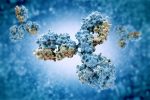Jacobus Recalls 3 Lots of Ruzurgi Due to Contamination
Written by |

Jacobus Pharmaceutical has issued a voluntary recall for three lots of Ruzurgi (amifampridine), a medication that is approved in the U.S. to treat people with Lambert-Eaton myasthenic syndrome (LEMS) ages 6–17.
According to the company’s announcement, while doing confirmatory full testing on one of the lots, control number 18038, Jacobus’ Canadian partner found that the medication was contaminated with yeast, mold, and aerobic bacteria. These microorganisms can cause serious and life-threatening infections if ingested.
This finding led Jacobus to conduct an expanded investigation, which revealed that two other lots — control numbers 18039 and 18079 — had suffered similar contaminations. Ruzurgi is sold in 100-count bottles. The control number is located to the right of the front panel on the bottle, just below the two-dimensional barcode.
All three lots were distributed to specialty pharmacies and physicians earlier this year. The first lot was distributed only in Canada, while the second two were distributed worldwide.
Jacobus is notifying its distributors and customers about the contamination via both regular and electronic mail, and is arranging for all of the recalled products to be returned. Individuals who have Ruzurgi that is being recalled are advised to stop using the product and return it. Anyone who has experienced health problems they think might be related to taking the medication is advised to contact their healthcare provider.
Returns can be shipped via the U.S. Postal Service to Jacobus Pharmaceutical Company, Inc., P.O. Box 5290, Princeton, NJ 08540. Or they also can be sent by courier service (UPS, FedEx, etc.) to Jacobus Pharmaceutical Company, Inc., IRL Building, 31 Schalks Crossing Road, Plainsboro, NJ 08356.
Jacobus’ representatives also are available to answer consumers’ questions about the recall by phone during business hours, at (609) 799-8221, ext. 2120.
LEMS is an autoimmune disease caused by antibodies that mistakenly attack a protein found on nerve cells, called voltage-gated calcium channel (VGCC). Normally, VGCC gets activated when an electrical signal reaches the end of the nerve, triggering the nerve to release chemical messengers that regulate muscle contraction.
Ruzurgi works by blocking the activity of another protein called voltage-gated potassium channel, which normally helps VGCC to “reset” after it has been activated. By doing so, Ruzurgi can essentially give VGCCs more time to reset, making it easier for nerve cells to send chemical messengers and effectively communicate with muscle cells.





